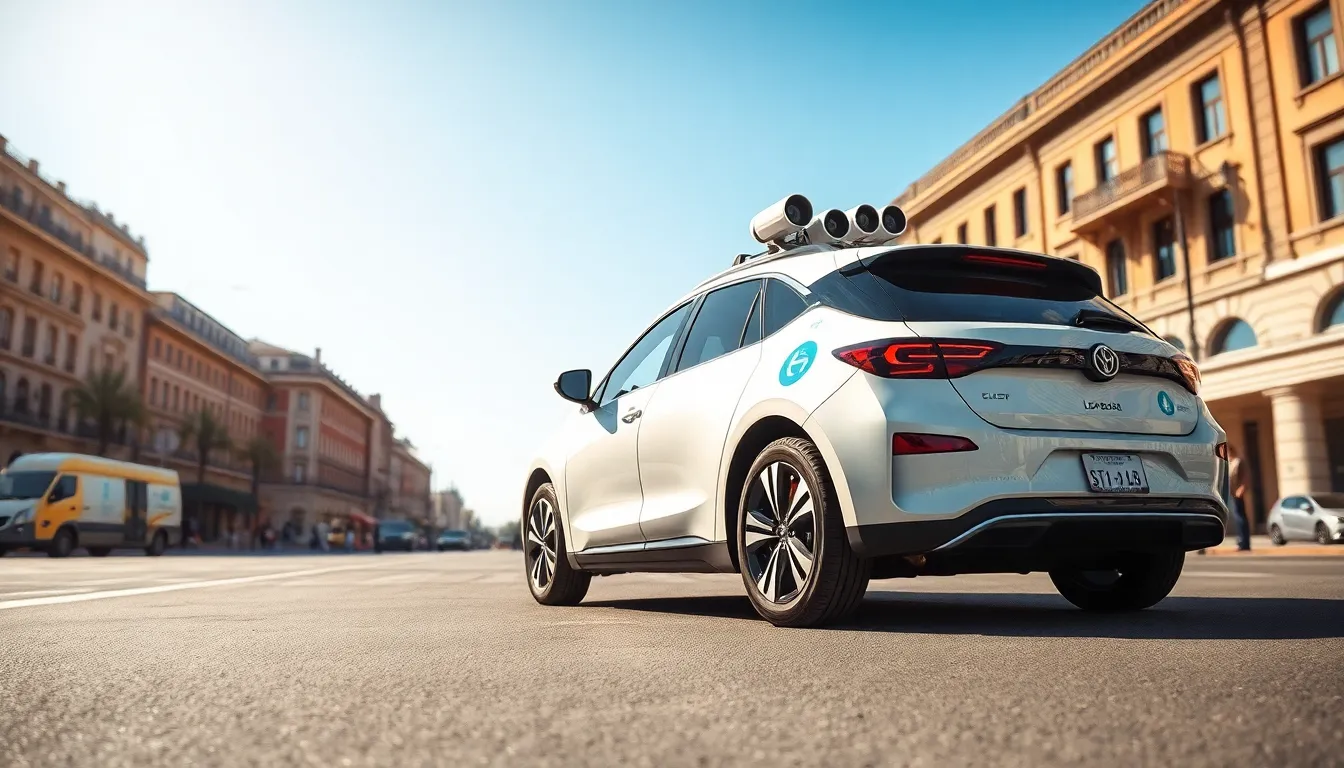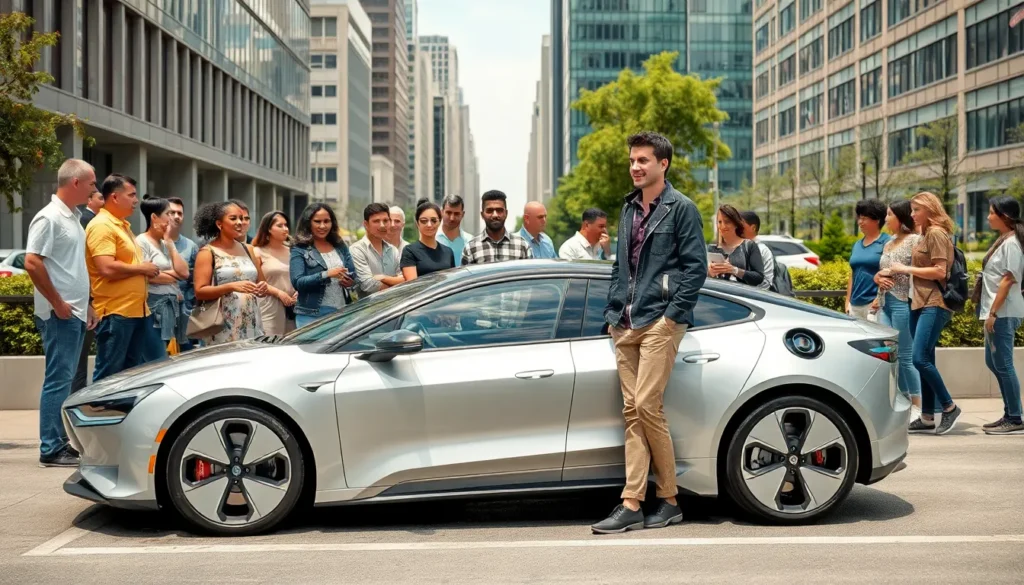Imagine a world where your car drives itself while you kick back and enjoy your favorite podcast. Sounds like a sci-fi movie, right? Well, welcome to the age of EV autonomous driving, where electric vehicles are not just eco-friendly but also smart enough to navigate traffic without breaking a sweat.
These futuristic rides are revolutionizing the way people think about transportation. Gone are the days of road rage and parallel parking nightmares. With advanced technology and a sprinkle of artificial intelligence, these cars promise a safer and more efficient journey. So buckle up as we explore the exciting landscape of EV autonomous driving, where the future is not just electric but also incredibly intelligent.
Table of Contents
ToggleOverview of EV Autonomous Driving
EV autonomous driving merges cutting-edge technology with electric vehicle designs. This integration offers a seamless experience where human intervention becomes minimal. Advanced sensors, cameras, and radar navigate the environment, facilitating safer and more efficient travel.
Data analysis plays a crucial role in supporting real-time decision-making, allowing vehicles to adapt to dynamic conditions. Algorithms process vast amounts of information, ensuring that the systems respond correctly to potential hazards. Notably, adaptation occurs through machine learning, enabling vehicles to improve their performance over time.
Reduced traffic congestion is another advantage offered by autonomous EVs. With coordinated driving patterns, these vehicles decrease the likelihood of bottlenecks and improve overall traffic flow. Additionally, the potential for improved fuel efficiency arises as autonomous systems optimize driving behavior.
Manufacturers in the automotive industry actively invest in autonomous driving technology. Companies like Tesla, Waymo, and Ford are among those leading the charge. Their commitment to innovation drives the development of advanced safety features, promoting public trust in EVs equipped with autonomous capabilities.
Regulatory challenges influence the widespread adoption of autonomous driving. Legal frameworks must adapt to this technology to ensure safe implementation. In this evolving landscape, collaboration between technology developers and legislators is essential to establish guidelines that facilitate growth.
Public perception also plays a significant role in shaping the future of EV autonomous driving. As consumers become more familiar with the technology, acceptance is likely to increase. Education about the benefits and safety of this innovation is critical for promoting its integration into daily life.
Key Technologies Behind EV Autonomous Driving

EV autonomous driving relies on several key technologies that enhance vehicle safety and efficiency.
Sensor Systems
Advanced sensor systems play a crucial role in autonomous vehicles. Lidar, radar, and cameras enable real-time object detection and classification. High-resolution cameras capture images at various angles, providing a comprehensive view of the vehicle’s surroundings. Lidar systems emit pulses of light, accurately measuring distance to create detailed 3D maps of the environment. Radar systems excel in monitoring the speed and distance of nearby vehicles, ensuring safe navigation. Integrating data from these sensors allows autonomous EVs to perceive their environment accurately, facilitating informed decision-making.
Machine Learning Algorithms
Machine learning algorithms enhance the cognitive capabilities of autonomous driving systems. They process vast amounts of data gathered by sensor systems to improve understanding of driving conditions. Continuous learning allows these algorithms to adapt to new scenarios, such as changing traffic patterns and diverse weather conditions. Training datasets, which include millions of driving miles, optimize performance through pattern recognition. Advanced neural networks analyze input from various sensors, helping the vehicle make split-second decisions on the road. Their ability to make real-time adjustments results in efficient and safe driving experiences.
Benefits of EV Autonomous Driving
Autonomous driving in electric vehicles (EVs) presents numerous advantages, significantly impacting the automotive landscape. The following sections detail key benefits contributing to a sustainable and safer future.
Environmental Impact
Autonomous EVs significantly reduce emissions by optimizing driving behaviors. Efficient route navigation leads to lower energy consumption, allowing for greener transportation. According to studies, fully electric self-driving cars can decrease greenhouse gas emissions by up to 70% compared to traditional vehicles. Resource conservation occurs through minimized energy usage, extending battery life and reducing the need for frequent charging. The transition to electric autonomous driving systems fosters less reliance on fossil fuels, promoting a cleaner environment overall.
Improved Safety Features
Safety enhancement stands out as a primary benefit of EV autonomous driving. Advanced technologies like Lidar and radar continuously monitor surroundings, detecting potential hazards with precision. These vehicles utilize data from multiple sensors to react swiftly, reducing the likelihood of accidents. Statistics indicate that autonomous driving systems can decrease crash rates by up to 90%. Additionally, real-time data analysis enables vehicles to adapt to road conditions, further mitigating risks. Despite initial concerns, research shows public support grows as awareness of safety benefits increases.
Challenges Facing EV Autonomous Driving
Autonomous driving in electric vehicles encounters significant challenges. These hurdles must be addressed for widespread adoption and integration into daily life.
Regulatory Hurdles
Regulatory frameworks lag behind technological advancements. Legislation often lacks clarity on liability in the event of accidents involving autonomous vehicles. Additionally, inconsistent state laws create confusion for manufacturers and consumers. Testing regulations vary, making it difficult for companies to gather essential data during development. Compliance with existing traffic regulations is another challenge, as many rules do not account for the capabilities of autonomous systems. To foster innovation, policymakers must collaborate with manufacturers, creating comprehensive guidelines tailored to emerging technologies.
Public Acceptance
Public perception plays a crucial role in the successful integration of EV autonomous driving. Many consumers remain skeptical about safety and reliability, stemming from negative coverage of accidents involving autonomous vehicles. Trust in the technology decreases when consumers lack knowledge about its benefits and underlying systems. Education initiatives could effectively address concerns by showcasing the safety features and environmental advantages of these vehicles. A gradual increase in exposure to autonomous driving technology can enhance consumer confidence, paving the way for broader acceptance and adoption in the market.
Future Trends in EV Autonomous Driving
The future of EV autonomous driving focuses on continuous advancements and integration into daily life. Companies actively enhance technology, creating faster processing systems and more accurate sensors. Updates to machine learning algorithms improve decision-making capabilities. As a result, vehicles become safer and more efficient over time. Electric vehicles will incorporate new communication networks, enabling connectivity with other vehicles and infrastructure. This collaboration boosts safety features by providing real-time data on traffic conditions and hazards.
Future trends also highlight the need for integration with smart cities. Urban planners envision streets optimized for autonomous vehicles, creating dedicated lanes and smart traffic signals. Traffic management systems will communicate with EVs, allowing for seamless navigation through busy areas. By incorporating energy-efficient solutions, cities prioritize sustainable transport options. Smart parking solutions will further enhance convenience, as vehicles identify and reserve parking spots autonomously. The collaboration between autonomous driving technology and urban development promises to reshape transportation.
The evolution of EV autonomous driving is set to redefine the future of transportation. As technology advances and public understanding grows, these vehicles promise enhanced safety and environmental benefits. The integration of sophisticated sensors and machine learning is paving the way for smarter travel experiences.
While challenges remain in regulatory frameworks and public perception, the potential for a cleaner and more efficient transportation network is undeniable. Continued investment from major manufacturers will likely accelerate the adoption of this transformative technology. As cities adapt to accommodate autonomous vehicles, the journey towards a sustainable and intelligent transportation ecosystem is just beginning.






